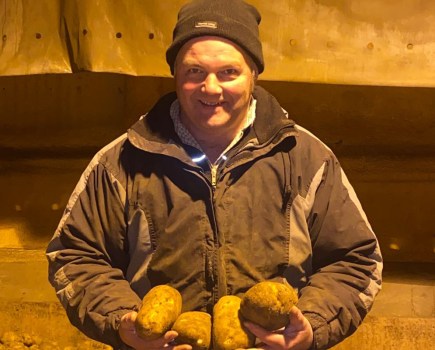By Guy Smith
Visiting Cereals 2025 in Lincolnshire found me in a nostalgic mood – it’s a sobering thought that in 2029 the event will be fifty years old. That’s presuming its appearance on Clarkson’s Diddly Squat Farm next year doesn’t kill it off.
It’s worth noting that the first event all those years ago was in the Cotswolds, with 2026 being the first time it’ll return to those brashy soils. Hopefully it’s not a case of first and last…
While I didn’t visit the initial Cereals in 1979, I’ve been visiting every year since the mid-1980s – that’s 40 years of attendance. In those days the Cereals Event and Sprays & Sprayers were two different shows.
If you were really keen and didn’t mind a super early start, there was also the Velcourt open day to attend. The basic concept behind this day was to apply increasing loads of chemicals to plots of the same varieties of wheat, barley, OSR, peas and beans to see the yield response. If I remember rightly, the overall result was usually the more you put on, the greater the yield with a better the margin to boot.
Today such chemophile Velcourt-hosted demonstrations are long gone and we have Groundswell instead. I suspect if you suggested at Groundswell that a cocktail of five sequential fungicide applications plus three broad-spectrum insecticides plus 300kgN of fertiliser was the best approach to growing wheat, you’d probably find yourself in a pit being stoned by the Pharisees of the regen church.
Similarly, just recently, Defra’s head honcho Steve Reed was in front of the Environment, Food and Rural Affairs Committee telling them everything would be alright for UK arable farmers because in the future we’d be applying less inputs while maintaining the same yields.
I’m not quite sure which set of replicated field trials Mr Reed was referring to here, but I did find it somewhat patronising to be told the answer to improved profitably was that easy-peasy. As someone who, back in the day, was sceptical about the ‘produce even more with even more’ approach of Velcourt, I’m even more sceptical that Mr Reed does actually know how to produce more with less.
Having said that, given the lack of rain, septoria and rust on the farm this year, half our wheats only had one fungicide application. The bad news for Mr Read is that because of the drought they won’t be producing a greater yield or a better margin.
But back to the Cereals Event, which for me is about varieties. I’ve always compared it to speed dating where you have a few minutes staring into the eyes (or ears) of various contenders that catch your attention, with the expectation you might enjoy them back at the farm next autumn.
I should add I’ve never been speed dating and nor would I know if going to the Cereals Event is anything like using Tinder, but what I do know is while I’ve only had the one wife, I’ve had dozens of different wheat varieties most of which I first met at Cereals.
From Norman and Avalon in the 1980s to SY Cheer and Goldfinch today, it’s been a rich pageant of hope over the expectation that I might finally have found the perfect variety to match my fumbling ham-fisted farming.
There have been some triumphs and disasters along the way, but in the words of Kipling, I’ve tried to treat both imposters just the same. Indeed back in the day there was a spring barley called ‘Triumph’ whereas I’ve never come across a cereal variety called ‘Disaster’. Having said that, I’ve had a few varieties that either didn’t pollinate or were plastered with rust for whom ‘Disaster’ would have been a very apt name. Actually their names were Moulin and Slejpner.
So what did I learn at Cereals 2025? As always there were some new varieties which turned my head, but I resolved it’s best to stay loyal to what I have in the seedbed back home. After all, I doubt I’ll be learning Diddly Squat at Cereals 2026.
This article was taken from the latest issue of CPM. Read the article in full here.
For more articles like this, subscribe here.
Sign up for Crop Production Magazine’s FREE e-newsletter here.




